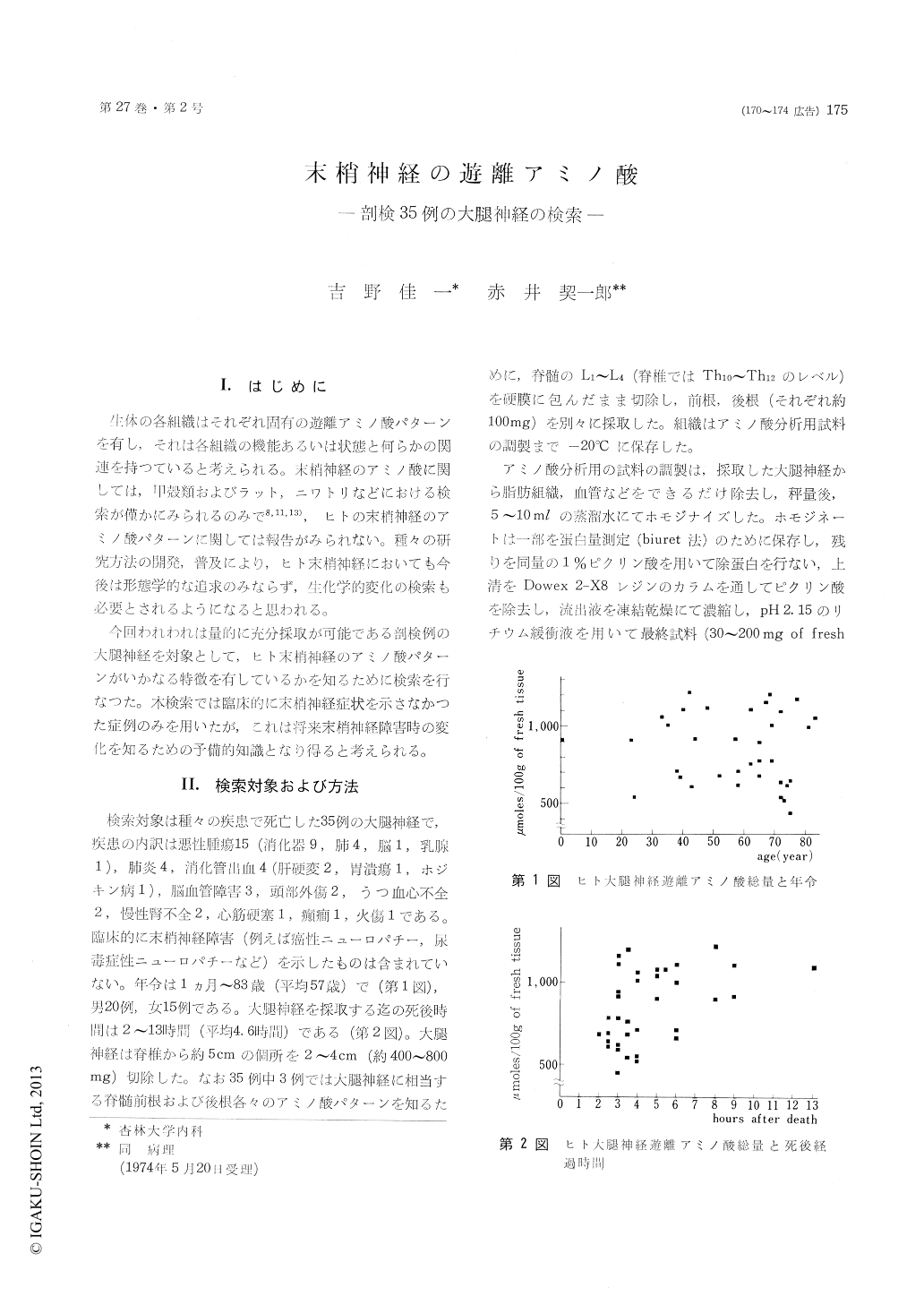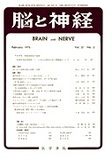Japanese
English
- 有料閲覧
- Abstract 文献概要
- 1ページ目 Look Inside
I.はじめに
生体の各組織はそれぞれ固有の遊離アミノ酸パターンを有し,それは各組織の機能あるいは状態と何らかの関速を持つていると考えられる。末梢神経のアミノ酸に関しては,甲殻類およびラット,ニワトリなどにおける検索が僅かにみられるのみで8,11,13),ヒトの末梢神経のアミノ酸パターンに関しては報告がみられない。種々の研究方法の開発,普及により,ヒト末梢神経においても今後は形態学的な追求のみならず,生化学的変化の検索も必要とされるようになると思われる。
今回われわれは量的に充分採取が可能である剖検例の大腿神経を対象として,ヒト末梢神経のアミノ酸パターンがいかなる特徴を有しているかを知るために検索を行なつた。本検索では臨床的に末梢神経症状を示さなかつた症例のみを用いたが,これは将来末梢神経障害時の変化を知るための予備的知識となり得ると考えられる。
The concentrations of free amino acids and related substances were measured by the use of an amino acid analyzer in the femoral nerve of 35 patients died of various diseases excluding peripheral neuro-pathies. Measurements were also performed in the ventral and dorsal spinal nerve roots corresponding to the femoral nerve (L1-L4) in 3 patients. Lithium citrate buffers were used in order to obtain gluta-mine and asparagine separately.
(1) The human femoral nerve has a unique pattern of free amino acids Among 36 ninhydrin-positive substances, the most abundant are, in the descending order of concentration, 1) alanine, 2) glutamine, 3) glutamic acid, 4) taurine, 5) glycine, 6) aspartic acid, 7) lysine (except urea and ammonia). These 7 substances occupy approximately 70% of the sum of the amino acids and related substances.
(2) This pattern of free amino acids in the femoral nerve has, in part, a similarity to those in the brain and the skeletal muscle, showing an intermediate pattern of the latter two.
(3) Various diseases or conditions, which exhibit no peripheral nervous symptoms, do not affect the pattern of free amino acids in the peripheral nerve. Also the age, the sex and the time elapsed after death have no relationship with the concentrations of free amino acids.
(4) There may be no marked differences between the motor and sensory nerve fibers in the pattern of free amino acids and related substances.
(5) There are, however, obvious differences in the pattern between the human peripheral nerve and the corresponding spinal nerve roots. Namely, alanine is almost always the most abundant in the femoral nerve, while glutamine always so in the spinal nerve roots (L1-L4). These differences may suggest the presence of factors such as active trans-port of amino acids, protein synthesis and break-down, and axoplasmic flow operating along the nerve fiber.

Copyright © 1975, Igaku-Shoin Ltd. All rights reserved.


